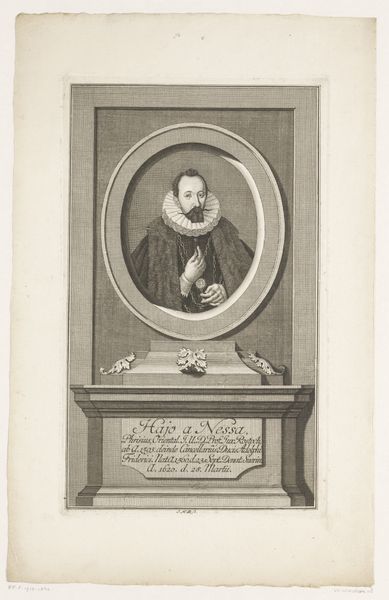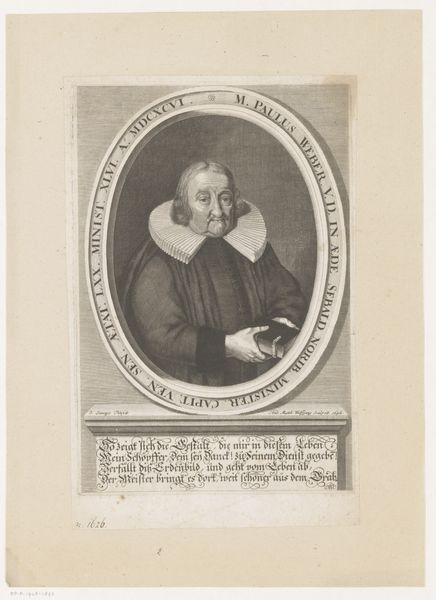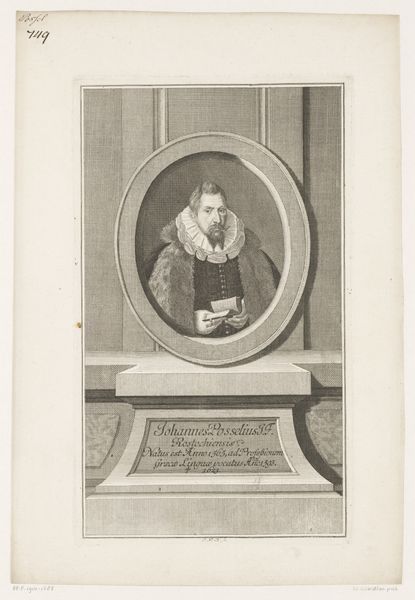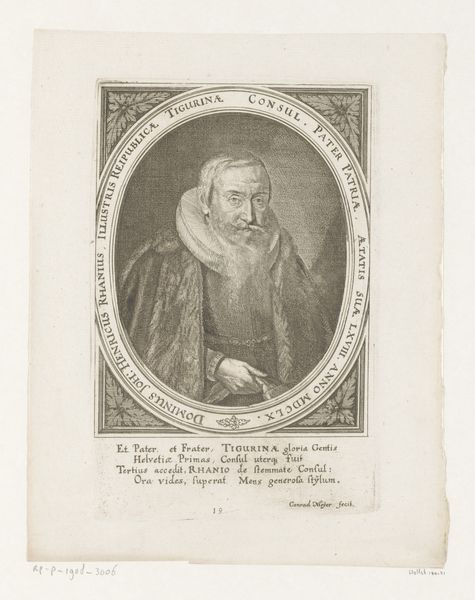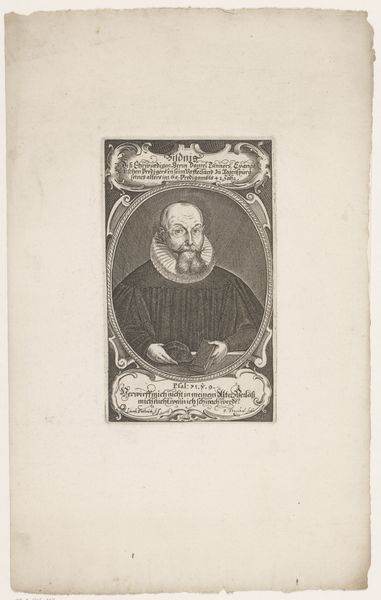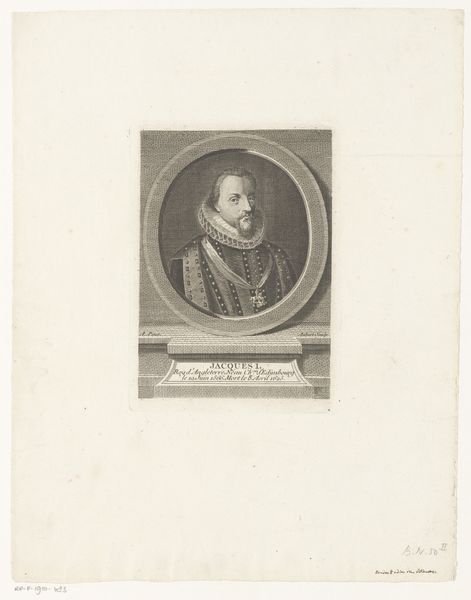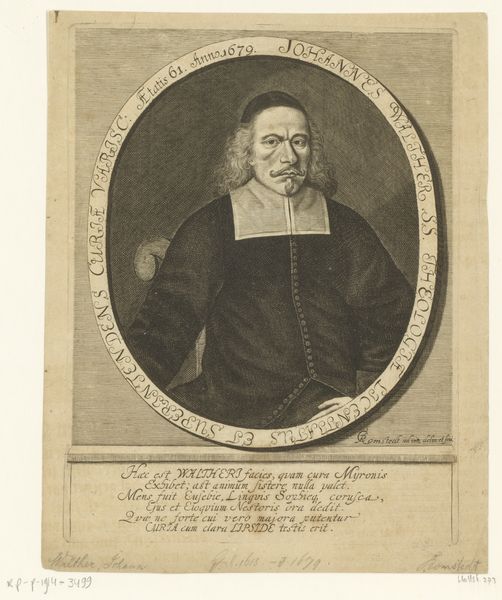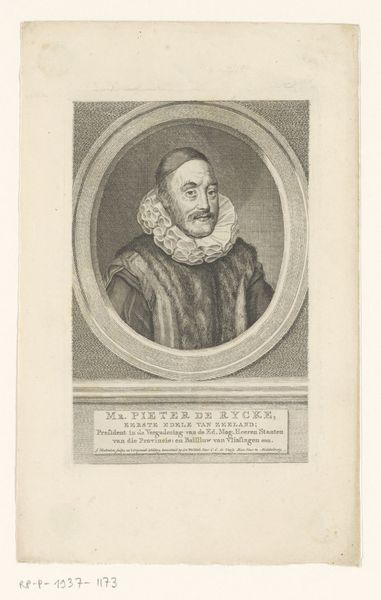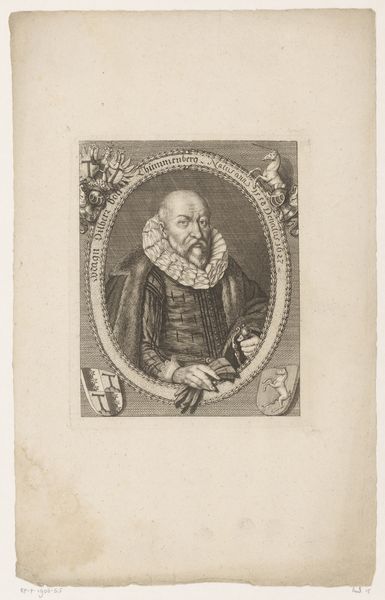
print, engraving
#
portrait
#
baroque
# print
#
history-painting
#
engraving
Dimensions: height 292 mm, width 174 mm
Copyright: Rijks Museum: Open Domain
Curator: Oh, hello there. I'm so intrigued by this engraving; there's something about the crisp lines that draws me in immediately. Editor: It does have a certain…severity, doesn’t it? A little stark. Is it the sitter? He doesn't look terribly approachable. Curator: Well, let’s see. What we're looking at is a portrait of Johann Cothmann. This particular print, made through engraving, dates back to 1743 and was crafted by Johann Martin Bernigeroth. He clearly was quite proud to display Cothmann enclosed in an oval frame! Editor: Enclosed indeed. And trapped, almost. But he seems rather pleased with his book! It’s giving me slight performative intellectual vibes… Curator: Oh, I think it’s more than that! Context, remember? This piece is deeply rooted in Baroque aesthetics—grandeur, drama, and intense contrasts. It attempts to reflect Cothmann's status. This portrait probably aimed to solidify his legacy, given the Baroque era's emphasis on portraying powerful figures with gravity. Editor: I suppose that makes sense. So the choice of making it an engraving on print allows to proliferate copies as a testament to his role as an influential figure... Curator: Precisely. Each line seems so purposeful and neat, as though nothing is out of place, nothing to be questioned. The overall effect is, of course, the artist working in tandem with the figure in their quest for immortalization, using the materials available for the era. Editor: And those endless pleats on that ruff! They do give the impression he means business. Maybe I was too hasty. There is something admirable about using these…conventions… to etch one's mark, quite literally. Curator: It's certainly a glimpse into how power and influence were portrayed and, more importantly, *wished* to be portrayed, back then. A time capsule of sorts! Editor: A stern one at that! But yes, fascinating nonetheless.
Comments
No comments
Be the first to comment and join the conversation on the ultimate creative platform.

